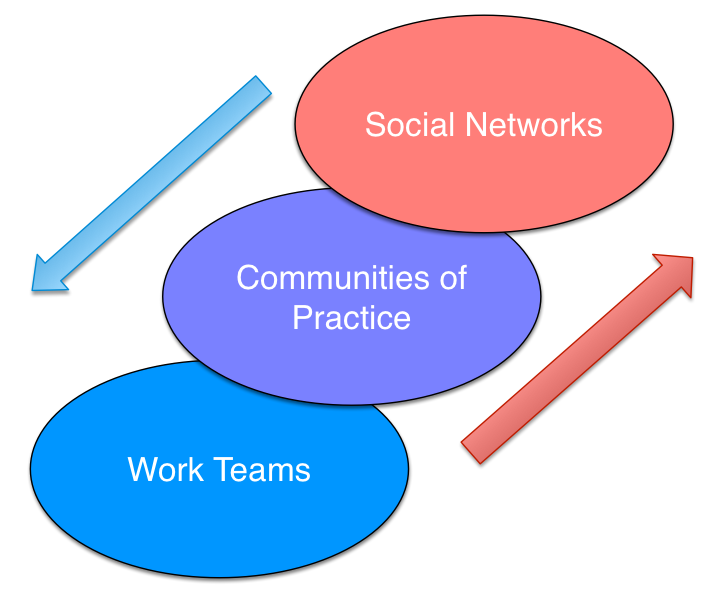 In thinking about the Coherent Organization, the original proposal from my colleague Harold Jarche was that were two key attitudes: collaboration and cooperation. And I find myself talking about collaboration and communication. It’s time to try to reconcile those, and propose why I think collaboration is a new business watchword.
In thinking about the Coherent Organization, the original proposal from my colleague Harold Jarche was that were two key attitudes: collaboration and cooperation. And I find myself talking about collaboration and communication. It’s time to try to reconcile those, and propose why I think collaboration is a new business watchword.
So, Harold argues that there are two key ways of working, collaborating and cooperating. To him, collaboration is when you’re committed to a goal to achieve, whether involuntarily or voluntarily. Cooperation, for him, is when you have the willingness to continue to contribute on an ongoing basis: putting out your own work, commenting on others, and answering questions. And he suggests that cooperation is the more important, as it’s more voluntary. And I agree that it’s likely that needs will drive collaboration, and cooperation comes from within (and in a safe environment). I think he’s talking about personal commitment, and rightly so.
So why do I talk about communication and collaboration? Because the vehicle for cooperation is communication, and so we not only need the impetus to contribute, but the skills. He’s talking about creating an effective network, and I’m talking about getting the job done. He’s nurturing a culture, and I’m about developing practices. Which are both needed and mutually reinforcing, and so I think we’re agreeing furiously.
And as I write this, my own thinking is changing. I do believe collaboration is what’s going to get things done for organizations in the short term, but I think there are two notions of collaboration. One is the traditional form of a team working on a project. However, there’s another approach that takes the longer term view. Here, it’s about people keeping a casual eye on what’s going on and serendipitous sparks fan flames. That does require cooperation, of course.
I’ve recently been reading Stephen Johnson’s Where Good Ideas Come From, and Keith Sawyer’s Group Genius (both recommended), and it’s clear that true innovation is about getting people to work together over time. Real innovation percolates, suffers mistakes, and can’t be forced or planned. While I think progress can be made by teams working on specific needs, the change in my thinking is realizing that the longer term process of real innovation requires continual contribution in networks. What Sawyer terms ‘collaboration webs’. And this will require cooperation.
As an aside, there are still big opportunities for collaboration tools. On a recent #lrnchat, a colleague shared how she was collaborating on presentations using Google Slides. And I’ve done much important work with others using Google Docs and Sheets. And tools exist for diagramming, and white boarding, and more. Still, the tools feel embryonic. I want voice and text live as well as comments. I want to have flexible representations mixed in, so I can be working on numbers and diagrams and text in one doc (a brief eulogy here for the fabulous program Trapeze that had a revolutionary document model decades ago).
While collaboration may get the immediate focus and the ink inches (I guess pixels these days :) – because of new tools, and the immediate business benefits – I think the longer term need will be to create an environment where the culture, the practices, and the tools are aligned for successful learning. I think there’re reasons to focus on both, but the important thing is to recognize the differences and get both right. Amy Edmondson, in her book on organizational agility Teaming, suggested using the term ‘learning’ instead of innovation, as it focused on longer term and made it safer. So perhaps I’ll talk about organizational learning for the long term, and use collaboration for the short term work. What do you think?
I might suggest we add the term “commitment” to collaboration for if we don’t commit to work together in an open manner then the organization will not learn, will not change or grow. With commitment comes connection that creates the space for collaboration that allows learning to be experienced and spread across the organization. Just a thought! – bill
Bill, agreed. When we’re on a project in the short-term collab, commitment is implicit. But both for cooperation and long-term collaboration, it does require commitment to contribute. I think that’s what Harold’s getting at with his ‘cooperation’ stance. Thanks for sharing!